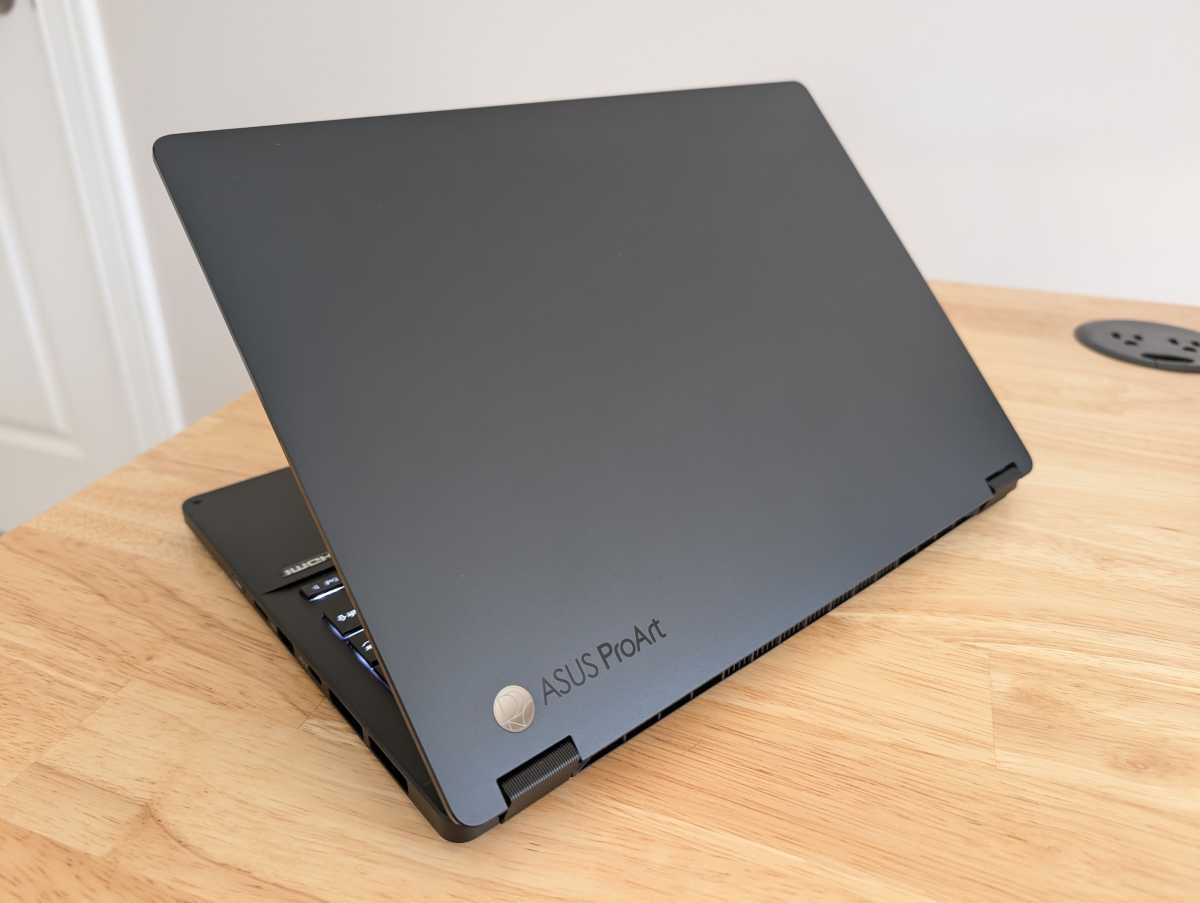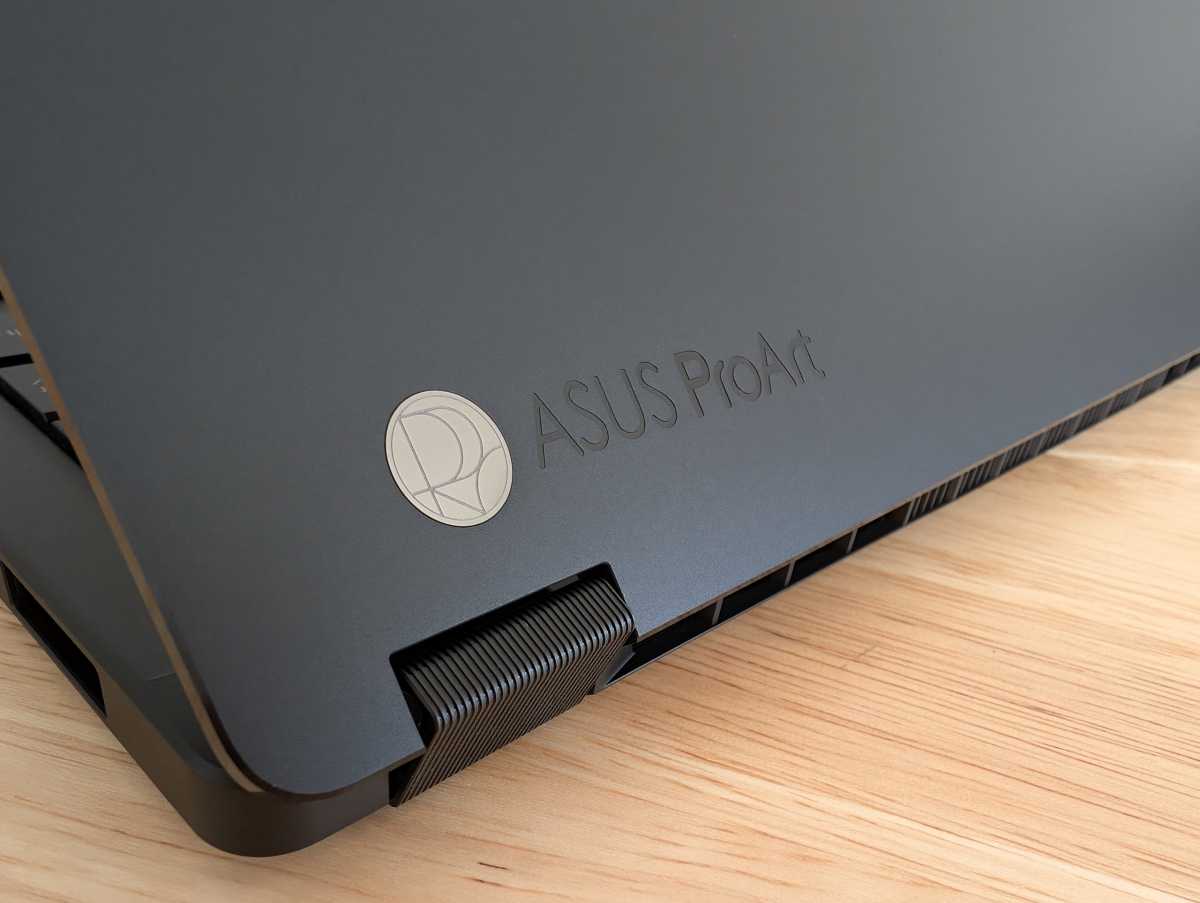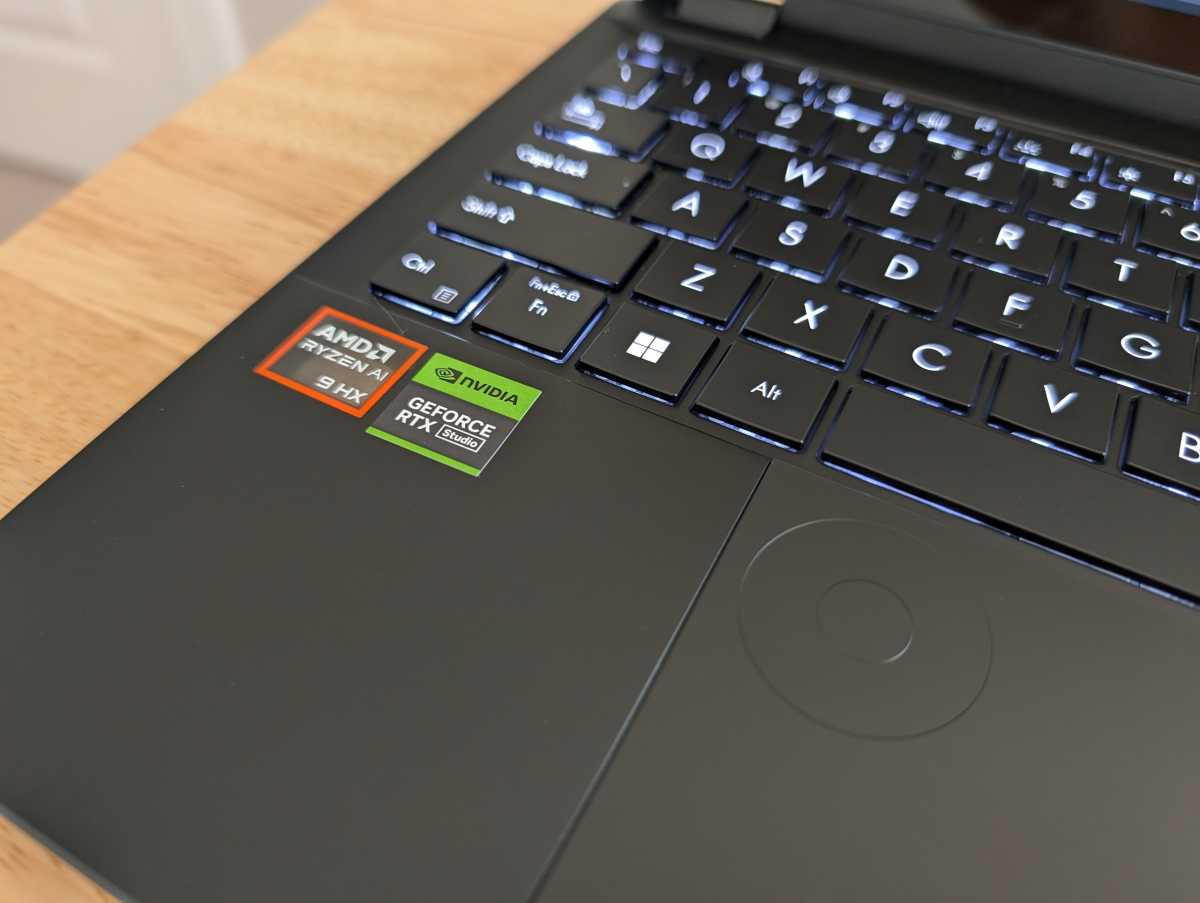At a glance
Expert’s Rating
Pros
Excellent multithreaded CPU performance
Beautiful OLED screen
Discrete Nvidia GPU for creative tasks
“AI PC” hardware with traditional x86 application compatibility
Cons
Lower battery life than a Snapdragon X laptop
Fans can be loud
No Copilot+ PC AI features at launch
Our Verdict
The Asus ProArt PX13 is a creator-focused laptop with impressive CPU performance thanks to its AMD Ryzen AI 300 series hardware. But, while this x86 machine has power and beauty, AMD’s latest hardware still falls behind Arm PCs when it comes to fan noise and battery life.
Price When Reviewed
$1,699
Best Prices Today: Asus ProArt PX13

$1699.99
The Asus ProArt PX13 is a portable PC intended for creators. It’s one of the first laptops out there with the new AMD Ryzen AI 9 HX 370 processor. New CPU aside, this PC packs lots of other useful features for creators, including a dedicated Nvidia RTX 4050 GPU, 32GB of RAM, and a beautiful OLED display with a touchscreen that also supports pressure-sensitive stylus input. It has a 360-degree hinge so you can lie it flat, too.
This is a high-quality PC for creators, and that AMD Ryzen hardware takes it to the next level. As we’ve already seen in some of our AMD Ryzen AI 300 benchmarks, this is “pretty, pretty, pretty darn good” hardware from AMD.
Further reading: Best laptops for video editing 2024: Work faster with these expert picks
Asus ProArt PX13: Specs
The Asus ProArt PX13 has impressive specs. It includes a AMD Ryzen AI 9 HX 370 CPU as well as a whopping 32GB of RAM, ensuring plenty of memory for creative applications.
AMD’s Ryzen AI platform includes a neural processing unit (NPU) with “up to 50 TOPS” (trillion operations per second) of performance. This means it beats the NPU in those Snapdragon X-powered Copilot+ PCs – at least on paper. And, unlike those Snapdragon X Elite and Snapdragon X Plus-powered laptops, this machine is a traditional x86 computer with full compatibility with traditional Windows software – no Prism translation layer required.
On top of that, you get a discrete Nvidia GPU. The $1,699 base model we reviewed includes an Nvidia RTX 4050 GPU, while Asus also sells a $1,999 model that comes with an Nvidia RTX 4060 GPU. A discrete Nvidia GPU like this one will be something many creative professionals are looking for, whether they’re doing graphical rendering or local AI tasks. This is yet another feature that Arm-powered Windows PCs don’t offer – with Snapdragon, you’re limited to the onboard Qualcomm Adreno GPU.
It’s worth noting that the Asus ProArt PX13 does not include a pen. You’ll have to buy a pen like the Asus Pen 2.0 separately to take advantage of the screen’s stylus support.
Asus ProArt PX13: Design and build quality

The Asus ProArt PX13 has great build quality with an all-aluminum chassis. The hinge works well – it’s easy to open with one hand and the screen doesn’t move or wobble as you type. The all-black design looks good to me, with an elegant “Asus ProArt” logo on the lid. It has a 360-degree hinge so you can rotate it into a “tent” mode or lie it flat on a surface for drawing.
Asus ProArt PX13 logo

Asus touts the laptop’s “nano black” finish, stating that its “anodizing process creates a nano-microporous structure that minimizes reflections, ensuring the laptop’s sleek ultra-black appearance in any lighting.” Asus also goes out of the way to tout the hydrophobic nature of the coating, stating that it produces a “smudge-resistant finish” that repels fingerprints. It all adds up to a very nice, premium-looking finish.
Asus ProArt PX13 dial pad

The trackpad includes an “Asus DialPad” at the top-left corner. To activate the Asus DialPad, you will touch the top-right corner of the touchpad and then diagonally, down and down the left. A small LED light will turn on inside the DialPad. You can then touch and rotate it to select different options in different applications. It’s a neat feature and is incredibly customizable using the “Asus Dial & Control Panel” application included with the PC. It works in a wide variety of applications, including Adobe Photoshop. Asus sees you using the dial as a convenient way to adjust brush sizes, for example, without keyboard shortcuts or clicking around with your mouse.
Asus ProArt PX13: Display and speakers
The Asus ProArt PX13’s display
Source link

















